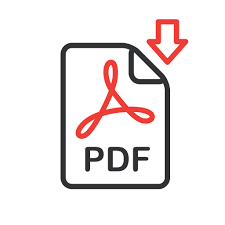Education in Slovakia/the Czech Republic
Slovakia and the Czech Republic belongs among countries with a well-developed school educational system. In general, education is under the control of the state, church or private bodies. State and religious schools are free of charge; they are financed by the state, while private schools charge high fees.
Pre-school education includes creches, nursery schools and kindergartens. Compulsory education at schools starts for children at the age of 6. Primary education, which provides basic knowledge for the pupils, lasts nine years. It includes subjects such as: the Slovak/ Czech language, a foreign language (English, German or others), Maths, Physics, History, Geography, Biology, Music, Physical Education (PE), Arts, Informational Technology, etc. The system of secondary education consists of several types of schools. There are vocational schools, which prepare students for different kinds of jobs, technical schools, secondary business schools, medical schools and grammar schools, where students are prepared for their future studies at universities. The study lasts either three years (vocational schools) and finishes with getting a skill certificate or four (five) years, which ends with school-leaving exams. In recent years a lot of new private grammar schools have been established; they usually specialize in foreign languages or computers. After finishing a secondary school, one can continue studying at any of the technical, economic, medicine, natural science or other types of university or college. It is possible to choose Bachelor or Diploma study. Studies at university end with state examinations and a so-called defence of a thesis.
Education in the U.S. Compulsory education in all states of the USA begins at the age of six. There are both state (public) and private schools. Private schools are supported by church groups or private funds, and pupils have to pay for their studies. But most American children attend state schools.
The system of U.S. education can be divided into the following stages:
1) Elementary education at elementary school (1st to 6th grades, i.e., between the ages of 6 and 12)
2) Secondary education at High School, which is divided into:
- a) Junior High School (7th to 9th grades, i.e., between the ages of 12 and 15).
- b) Senior High School (10th to 12th grades, i.e., between the ages of 15 and 18). Near the end of the final year at high school, students can take a test in all compulsory subjects, called the Scholastic Achievement Test (SAT), and the results are considered for college entrance requirements.
3) Higher education at colleges or universities (e.g., Harvard University)
Education in Great Britain
Full-time education is compulsory for all children between the ages of 5 and 18. However, students have a choice of whether to stay in full-time education or to choose a more vocational route, such as an apprenticeship. There are state schools and private schools (called public schools). Over 90% of children attend state schools, which are free of charge. Public schools typical of Great Britain are private boarding schools. Children are accepted here only when they pass entrance exams. But only a few children can afford to attend public schools because the fees are very high.
Primary education is given to children between the ages of 5 and 11. Primary schools are usually divided into infant schools for children between the ages of 5 and 7 and junior schools for children aged 7 to 11.
In most areas of England Wales and Northern Ireland secondary education is provided by comprehensive schools, which offer a general education. This ends at the age of 16, when most pupils take a form of public examination in about seven subjects. These (GCSE) General Certificate of Secondary Education exams give pupils a qualification that is recognised across the whole country. Most pupils continue their education for another two years, in the sixth form (2 more years at school) or at college for more vocational qualifications.
These studies lead to more advanced examinations called A – Levels in two or four subjects, or vocational qualifications. The A Level examinations are very important for those who want to continue their studies at university. The most outstanding universities in Great Britain include the world famous universities of Oxford and Cambridge.
By the way Scotland has its own system and qualification framework that is separate from the one set for England, Wales and Northern Ireland.
Children in Scotland complete seven years of primary school, starting in P1 (the equivalent of Reception classes in England), going up to P7 (the equivalent of Year 7 in England). After this, they do six years of secondary school from S1 to S6 (equivalent to Y8 to Y13 in England). Secondary schools in Scotland are also known as high schools or academies. Their public exam system is also different Nationals are similar to GCSE’s and Highers and Advanced Highers to A Levels.
Answer the questions:
- Which schools give a better education – private or state ones?
- Would you like to study at a university abroad? Why?
- How can parents and teachers motivate children to study?

